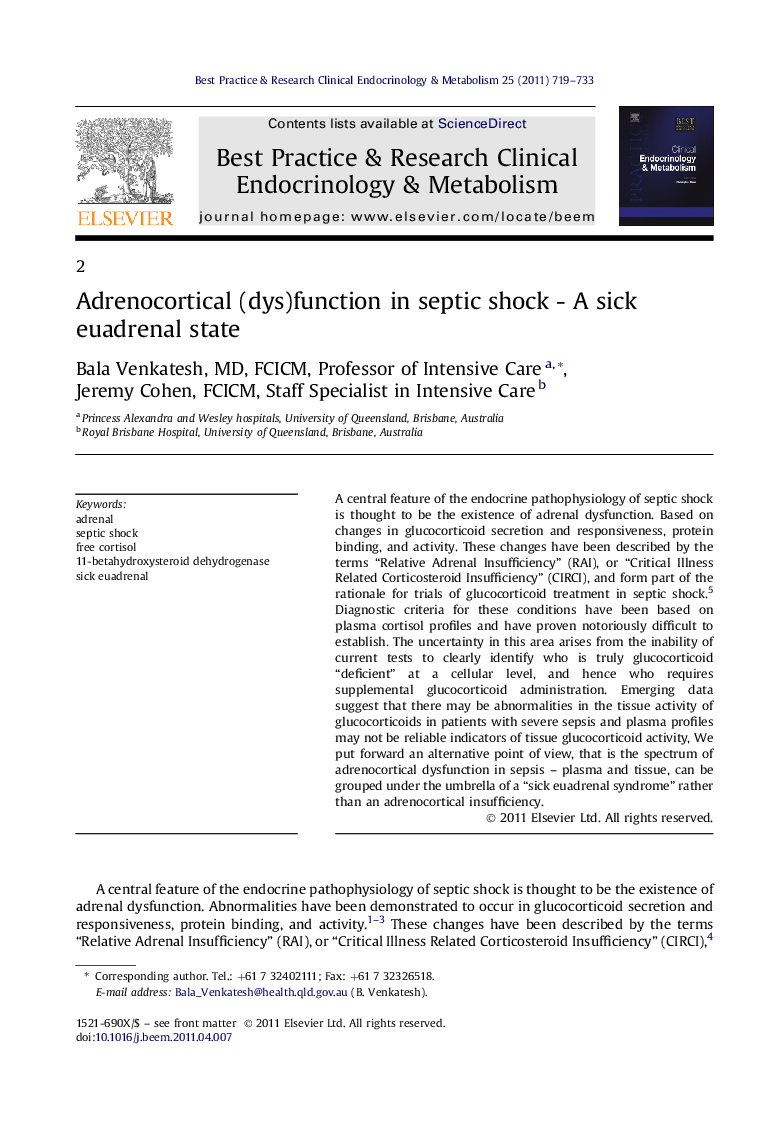| Article ID | Journal | Published Year | Pages | File Type |
|---|---|---|---|---|
| 5896548 | Best Practice & Research Clinical Endocrinology & Metabolism | 2011 | 15 Pages |
Abstract
A central feature of the endocrine pathophysiology of septic shock is thought to be the existence of adrenal dysfunction. Based on changes in glucocorticoid secretion and responsiveness, protein binding, and activity. These changes have been described by the terms “Relative Adrenal Insufficiency” (RAI), or “Critical Illness Related Corticosteroid Insufficiency” (CIRCI), and form part of the rationale for trials of glucocorticoid treatment in septic shock.5 Diagnostic criteria for these conditions have been based on plasma cortisol profiles and have proven notoriously difficult to establish. The uncertainty in this area arises from the inability of current tests to clearly identify who is truly glucocorticoid “deficient” at a cellular level, and hence who requires supplemental glucocorticoid administration. Emerging data suggest that there may be abnormalities in the tissue activity of glucocorticoids in patients with severe sepsis and plasma profiles may not be reliable indicators of tissue glucocorticoid activity, We put forward an alternative point of view, that is the spectrum of adrenocortical dysfunction in sepsis - plasma and tissue, can be grouped under the umbrella of a “sick euadrenal syndrome” rather than an adrenocortical insufficiency.
Keywords
Related Topics
Life Sciences
Biochemistry, Genetics and Molecular Biology
Endocrinology
Authors
Bala (Professor of Intensive Care), Jeremy (Staff Specialist in Intensive Care),
